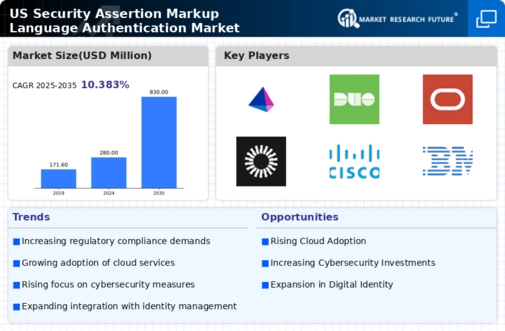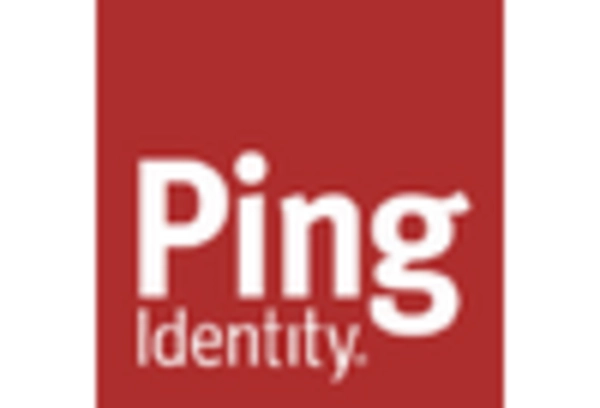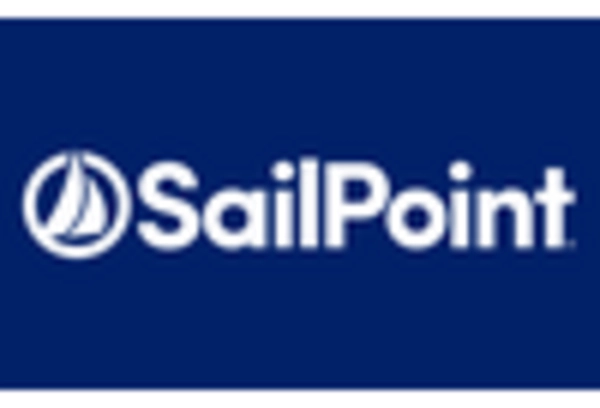Rising Cybersecurity Threats
The increasing frequency and sophistication of cyber threats is a primary driver for the security assertion-markup-language-authentication market. Organizations are compelled to adopt robust authentication mechanisms to safeguard sensitive data. In 2025, it is estimated that cybercrime will cost businesses globally over $10 trillion annually, highlighting the urgency for enhanced security measures. As companies face potential breaches, the demand for SAML-based solutions is likely to surge, as they provide a secure method for exchanging authentication and authorization data. This trend indicates a growing recognition of the importance of secure identity management, which is essential for maintaining trust and compliance in digital transactions.
Integration with Emerging Technologies
The integration of security assertion-markup-language-authentication with emerging technologies such as artificial intelligence (AI) and machine learning (ML) is transforming the landscape of identity management. These technologies enhance the ability to detect anomalies and respond to threats in real-time, thereby improving security posture. In 2025, the AI market is projected to reach $190 billion, suggesting that organizations are increasingly investing in AI-driven security solutions. This integration not only streamlines authentication processes but also fortifies defenses against unauthorized access. Consequently, the security assertion-markup-language-authentication market is likely to experience growth as businesses seek to leverage these advanced technologies for enhanced security.
Demand for Seamless Digital Experiences
As organizations strive to provide seamless digital experiences for users, the security assertion-markup-language-authentication market is witnessing increased demand. Users expect quick and efficient access to services without compromising security. In 2025, it is anticipated that 70% of organizations will prioritize user experience in their security strategies. This shift is driving the adoption of SAML, which facilitates single sign-on (SSO) capabilities, allowing users to access multiple applications with a single set of credentials. By enhancing user convenience while maintaining security, SAML solutions are becoming integral to digital transformation initiatives across various sectors.
Growth of Remote Work and Digital Collaboration
The shift towards remote work and digital collaboration has accelerated the need for secure authentication solutions, propelling the security assertion-markup-language-authentication market. With more employees accessing corporate resources from various locations, organizations must ensure secure access to sensitive data. In 2025, it is estimated that remote work will account for 30% of the workforce, necessitating robust identity management solutions. SAML enables secure access to cloud-based applications, making it a preferred choice for organizations adapting to this new work environment. This trend underscores the importance of implementing effective authentication strategies to protect organizational assets in a distributed work setting.
Regulatory Pressures and Compliance Requirements
The evolving regulatory landscape in the United States is a significant driver for the security assertion-markup-language-authentication market. Organizations are increasingly required to comply with stringent regulations such as the General Data Protection Regulation (GDPR) and the Health Insurance Portability and Accountability Act (HIPAA). These regulations mandate robust authentication measures to protect sensitive information. In 2025, it is projected that compliance-related spending will exceed $20 billion, indicating a strong focus on meeting regulatory requirements. As businesses navigate these complexities, the adoption of SAML-based solutions is likely to rise, as they provide a framework for secure data exchange and compliance adherence.

















Leave a Comment